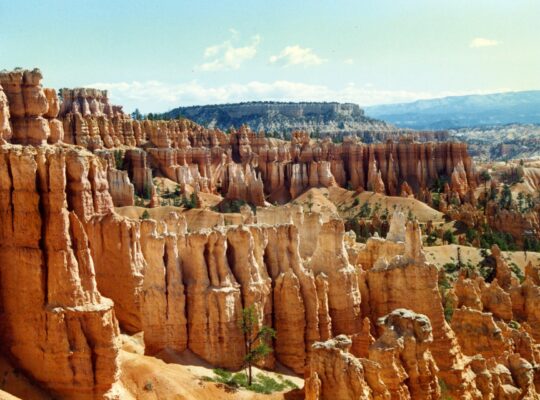Vetiver Grass helps Regenerate Farms in Mexico
Vetiver grass, found indigenously on the Indian subcontinent, could be a huge benefit to farmers in Veracruz, Mexico, as the area faces mass soil erosion due to climate change.
Not all about Carbon
In the discourse surrounding environmentalism, the most talked about topic generally is carbon pollution and its global impacts. Rightly so, as carbon dioxide in our atmosphere significantly contributes to global warming and has consequences beyond just heating the planet.
However, there are other factors to consider, and they have serious implications for themselves. One of these factors is soil erosion.
In Mexico, soil erosion is a major issue to consider as the increased frequency and intensity of storms throughout the country degrades farmland and lowers the amount of food available for the population.
However, in the push towards more sustainable practices, a groundcover from the Indian subcontinent called vetiver grass could benefit a country whose farmland is slipping out from under them.
Vetiver Grass has Many Benefits
Vetiver grass was found in India, where it was farmed for perfume. Its earthy scent found in its roots became the foundation of perfumes for years and was exported and processed in their manufacture. Over time, the benefits of the plant in agroecology were forgotten, only to be rediscovered in the 1980s. Farmers in India revitalized the use of vetiver grass for hedgerows to prevent soil erosion in rice fields.
This practice was exported throughout Asia and even to other areas of Latin America, such as Ecuador and Venezuela. This unique property is why vetiver is such a valuable plant, being that it can form a natural root barrier for other plants. This root barrier can be used to prevent invasive species from spreading or to provide stability to the soil, saving farms after storms sweep through the areas planted.
The indigenous peoples of Mexico have used barrier designs like this for hundreds of years, though they traditionally used stone which is heavy and difficult to install. Vetiver, on the contrary, is not. Vetiver grass doesn’t reproduce using seeds; instead, it reproduces using root division, making it easy to control and contain. It also has the ability to clean the soil of pollution from heavy metals, meaning that it can help restore areas that have been contaminated by industry.
Vetiver grass’ deep, extensive root system can grow up to 30 feet deep. This massive root system is an excellent erosion control plant and a valuable source of biomass. It is a highly effective erosion control plant; the deep roots help to hold soil in place and prevent it from being washed away by wind or water. Vetiver grass is often used to stabilize slopes, banks, and other areas that are prone to erosion.
Vetiver grass is a valuable source of biomass; its leaves and stems can be used to produce biofuel, animal feed, and other products and can be grown without the use of pesticides or herbicides.
Miguel Turrent, a tobacco farmer in Veracruz, Mexico, has found that vetiver has been life-saving for the profitability of his business, especially after storms have devastated so much. He said, “A field where I previously harvested 1,000 kilograms of tobacco per hectare” — about 900 pounds per acre — “was already yielding 1,700 kilograms [1,500 lbs per acre] by 2020. Vetiver has done a miracle,”
See also: Seagrass Meadows Builds Shorelines in the Face of Rising Seas.
Part of a Larger Trend
However, this shift towards using Vetiver grass isn’t isolated. It is part of a larger trend toward implementing regenerative agriculture and agroecology into farming practices.
The ancient peoples of Mexico had these techniques mastered for hundreds of years until Europeans came and pushed the area towards creating monocultures for export.
However, nothing is new except that which has been forgotten, and as such, these techniques are new and exciting for many looking to do things differently and more sustainably.
It’s remarkable how much nature offers to help us feed ourselves and how much we can do naturally to save nature. As it turns out, grass found indigenously on the other side of the world could be a major contributor to the regeneration of a country thousands of miles away.










